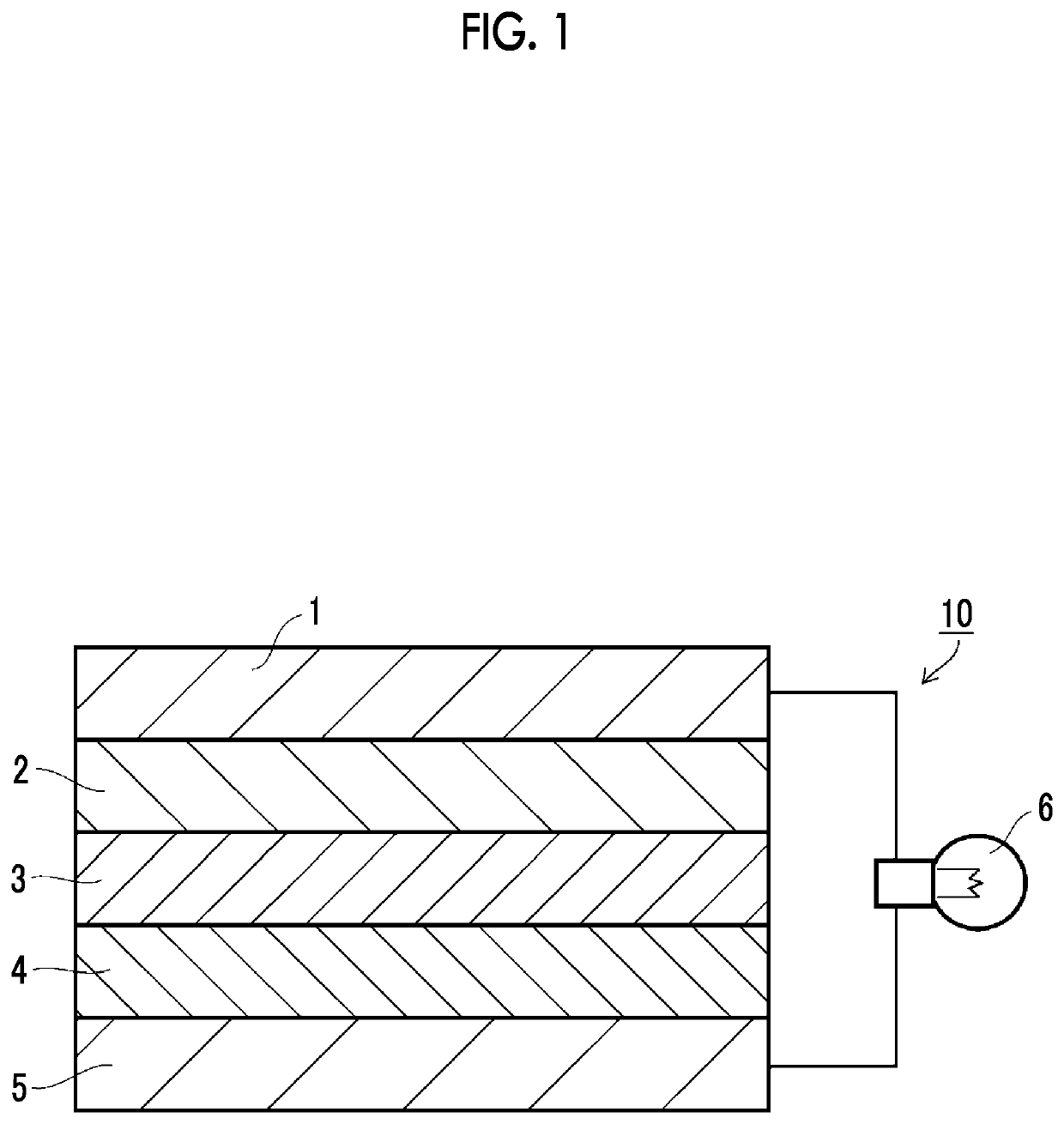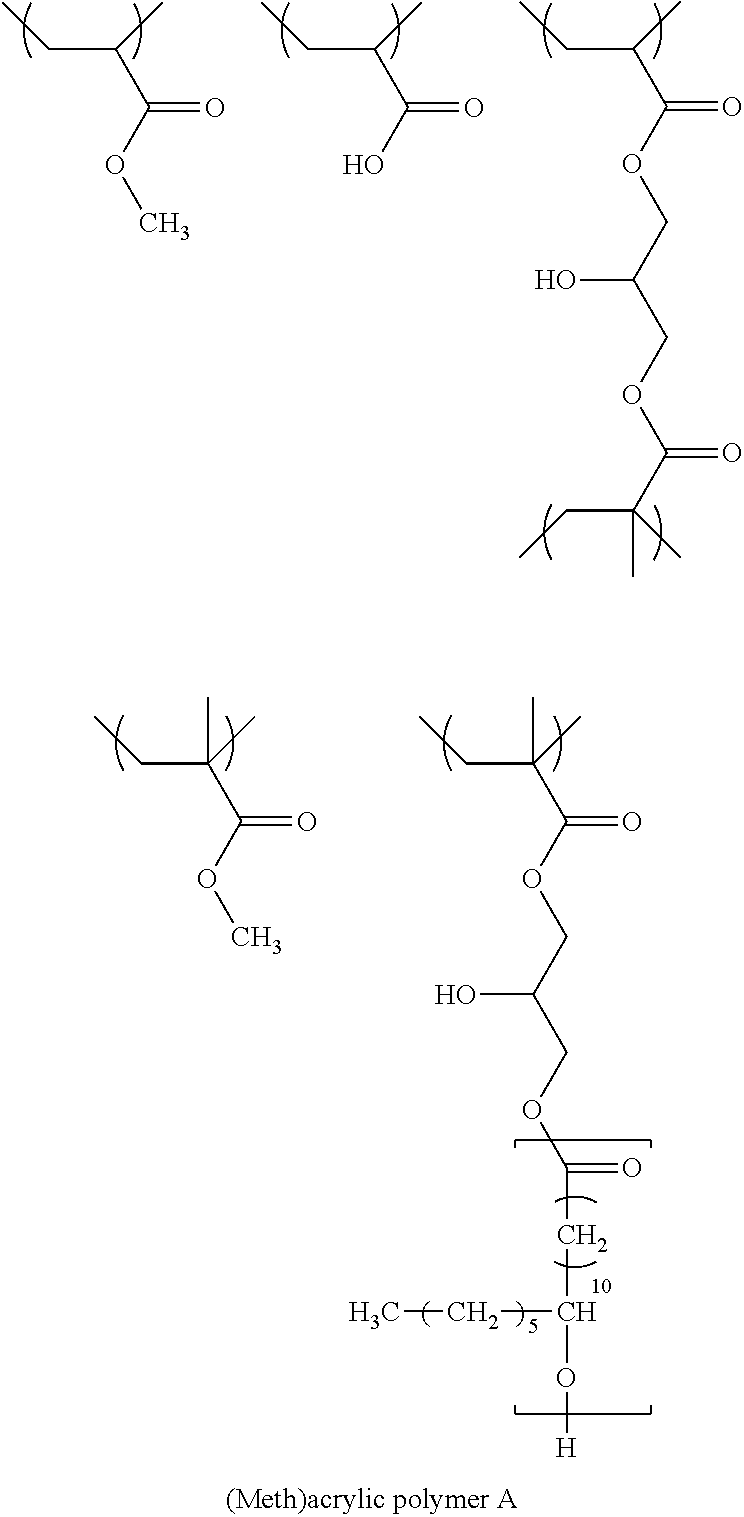Inorganic solid electrolyte-containing composition, sheet for all-solid state secondary battery, and all-solid state secondary battery, and manufacturing methods for sheet for all-solid state secondary battery and all-solid state secondary battery
a technology of all-solid-state secondary batteries and compositions, which is applied in the direction of electrochemical generators, cell components, non-metal conductors, etc., can solve the problems of insufficient binding force between solid particles, insufficient interfacial contact state between solid particles, and high interfacial resistan
- Summary
- Abstract
- Description
- Claims
- Application Information
AI Technical Summary
Benefits of technology
Problems solved by technology
Method used
Image
Examples
synthesis example 1
Acrylic Polymer A and Preparation of Polymer Binder Dispersion Liquid Consisting of Acrylic Polymer A
[0328]In a 2L three-necked flask equipped with a reflux condenser and a gas introduction cock, 7.2 g of a heptane solution of 40% by mass of the following macromonomer M-1, 12.4 g of methyl acrylate (MA), and 6.7 g of acrylic acid (AA), 207 g of heptane (manufactured by FUJIFILM Wako Pure Chemical Corporation), and 1.4 g of azoisobutyronitrile were added, nitrogen gas was introduced at a flow rate of 200 mL / min for 10 minutes, and then the temperature was raised to 100° C. A liquid (a liquid obtained by mixing 846 g of the heptane solution of 40% by mass of the macromonomer M-1, 222.8 g of methyl acrylate, 75.0 g of acrylic acid, 300.0 g of heptane, and 2.1 g of azoisobutyronitrile) prepared in a separate container was dropwise added thereto over 4 hours. After the dropwise addition was completed, 0.5 g of azoisobutyronitrile was added thereto. Then, after stirring at 100° C. for 2 h...
synthesis example 2
ne-Based Polymer PVDF-HFP1 and Preparation of Polymer Binder Solution Consisting of PVDF-HFP1
[0330]A fluorine-based polymer PVDF-HFP1 was synthesized to prepare a binder solution (concentration: 10% by mass) consisting of this fluorine-based polymer.
[0331]Specifically, 200 parts by mass of ion exchange water and 100 parts by mass of vinylidene fluoride were added to an autoclave, 1 part by mass of diisopropyl peroxydicarbonate was added, and the mixture was stirred at 30° C. for 24 hours. After completion of the polymerization, 25 parts by mass of hexafluoropropylene and 1 part by mass of diisopropyl peroxydicarbonate were added to the reaction mixture, and the mixture was stirred at 30° C. for 24 hours. After completion of the polymerization in this manner, the precipitate was filtered and dried at 100° C. for 10 hours to obtain PVDF-HFP1 (a polymer binder). The obtained PVDF-HFP1 was dissolved in butyl butyrate to obtain a binder solution.
[0332]PVDF-HFP1 is a block copolymer havin...
synthesis example 3
ne-Based Polymer PVDF-HFP2d Preparation of Polymer Binder Solution Consisting of PVDF-HFP2
[0333]A fluorine-based polymer PVDF-HFP2 was synthesized in the same manner as PVDF-HFP1 except that the amount of vinylidene fluoride was changed to 93.8 parts by mass and the amount of hexafluoropropylene was changed to 31.3 parts by mass. The obtained PVDF-HFP2 was dissolved in butyl butyrate to obtain a binder solution (concentration: 10% by mass).
[0334]PVDF-HFP2 is a block copolymer having a copolymerization ratio [PVdF:HFP] (mass ratio)=75:25 of polyvinylidene fluoride (PVdF) to hexafluoropropylene (HFP), and it has an SP value of 12.0.
PUM
| Property | Measurement | Unit |
|---|---|---|
| crystallization temperature | aaaaa | aaaaa |
| peel strength | aaaaa | aaaaa |
| ion conductivity | aaaaa | aaaaa |
Abstract
Description
Claims
Application Information
 Login to View More
Login to View More - R&D
- Intellectual Property
- Life Sciences
- Materials
- Tech Scout
- Unparalleled Data Quality
- Higher Quality Content
- 60% Fewer Hallucinations
Browse by: Latest US Patents, China's latest patents, Technical Efficacy Thesaurus, Application Domain, Technology Topic, Popular Technical Reports.
© 2025 PatSnap. All rights reserved.Legal|Privacy policy|Modern Slavery Act Transparency Statement|Sitemap|About US| Contact US: help@patsnap.com


